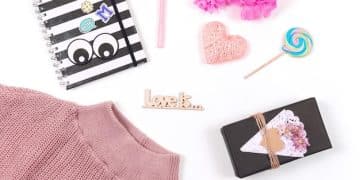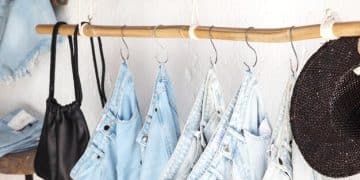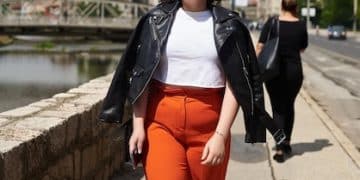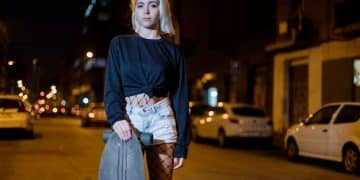Mix and Match Outfits: Mastering Style on a Budget
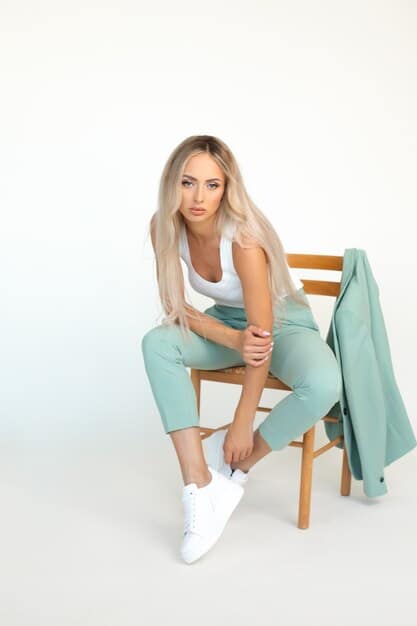
Mastering the art of mix and match empowers you to create a multitude of stylish outfits from a limited wardrobe, saving money while expressing your unique fashion sense through resourceful and creative combinations.
Do you dream of a closet brimming with endless outfit possibilities without breaking the bank? Mastering the art of mix and match is your secret weapon. It’s about transforming a few key pieces into a diverse array of looks, stretching your style and your budget further than you ever thought possible.
Understanding the Foundation: Key Pieces for Mixing and Matching
The secret to a versatile wardrobe lies in choosing the right foundational pieces. These are items that can be easily dressed up or down and paired with a variety of other items. Investing in quality basics will pay off in the long run, as they will form the bedrock of countless outfits.
The Essential Tops
When selecting tops, think about versatility and neutral colors. Items that can be worn in different seasons and for different occasions are ideal.
- White T-shirt: A classic staple that can be paired with jeans, skirts, or dressed up under a blazer.
- Black T-shirt: Offers a sleek and sophisticated look, easily paired with brighter or patterned bottoms.
- Striped Top: Adds a touch of personality and can be nautical-inspired or more contemporary depending on the stripe pattern.
- Button-Down Shirt: A crisp button-down can be worn open, tied at the waist, or tucked in for a polished look.
Bottoms That Go the Distance
Choose bottoms in neutral colors and classic styles that can be mixed and matched to create various looks.
- Dark Wash Jeans: A versatile denim option that can be dressed up or down.
- Black Pants: Whether tailored trousers or a more relaxed fit, black pants are a wardrobe essential.
- Neutral Skirt: A knee-length or midi skirt in a neutral color can be paired with various tops and shoes.
Outerwear: Your Outfit’s MVP
A great piece of outerwear can completely transform an outfit. Choose styles in neutral colors that will complement a range of looks.
- Denim Jacket: A casual and versatile option for layering.
- Blazer: Instantly elevates any outfit, making it suitable for more formal occasions.
- Neutral Cardigan: A comfortable and cozy option for layering in cooler weather.
By carefully selecting these key pieces, you’ll create a solid foundation for endless mix-and-match possibilities. Remember to choose items that fit well and flatter your body type, ensuring you feel confident and stylish.
Color Harmony: Building a Cohesive Palette
Creating a cohesive color palette is essential for mastering the art of mix and match. A well-coordinated palette will ensure that your clothes work together seamlessly, making it easier to create stylish and put-together outfits. Sticking to a limited color range can also help to simplify your wardrobe and reduce decision fatigue.
The Power of Neutrals
Neutrals are the backbone of any mix-and-match wardrobe. They are versatile, timeless, and can be easily paired with bolder colors or patterns.
Think about colors like: black, white, gray, navy, beige, and olive green. These colors create a blank canvas that allows you to experiment with other colors and accessories.
Adding Accent Colors
Once you have a solid base of neutrals, start incorporating accent colors to add personality and visual interest to your outfits. Choose colors that complement your skin tone and that you genuinely enjoy wearing.
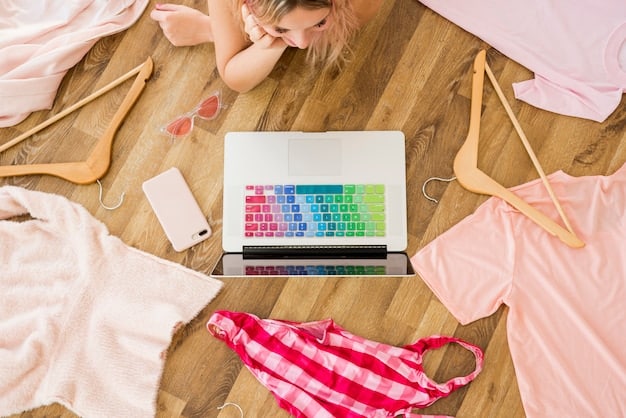
Consider these accent colors: burgundy, mustard yellow, teal, blush pink, and emerald green.
Understanding Color Relationships
A basic understanding of color theory can be helpful in creating harmonious color combinations. For example, complementary colors (those opposite each other on the color wheel, such as blue and orange) can create a striking contrast, while analogous colors (those next to each other, such as blue and green) offer a more subtle and harmonious look.
Experiment to discover what you like. Don’t be afraid to try new combinations and explore different color relationships.
By building a cohesive color palette, you’ll make it much easier to mix and match your clothes and create stylish outfits with confidence. Remember, the goal is to create a wardrobe that feels both versatile and authentically you.
Accessorizing Strategically: The Details That Elevate Your Look
Accessories are the unsung heroes of any well-curated wardrobe. They have the power to transform a simple outfit into something truly special, adding personality, flair, and sophistication. When you’re working with a limited wardrobe, strategic accessorizing becomes even more important. The right accessories can elevate your look and create a variety of different styles with just a few key pieces.
Jewelry That Makes a Statement
Jewelry is an excellent way to add personality and refine any look. Consider investing in a few key pieces that can be mixed and matched with your existing wardrobe.
Scarves: Versatility in Fabric
Scarves are incredibly versatile accessories that can add color, texture, and warmth to any outfit. Experiment with different fabrics, sizes, and patterns to create endless style combinations.
Belts: Cinching the Deal
Belts are not only functional, but they will also shape your silhouette and add a distinct vibe to an outfit. A well-chosen belt may be a game changer.
- Classic Leather Belt: A timeless style that can be worn with jeans, skirts, or dresses.
- Statement Belt: Adds a touch of personality and can be used to dress up a simple outfit.
Shoes: Grounding Your Style
Shoes are an essential element of any outfit. Select shoes that are versatile and comfortable.
- Neutral Sneakers: A comfortable and stylish option for casual outings.
- Ankle Boots: Can be dressed-up.
- Flats: Perfect for a polished and practical look.
With the right accessories, you can dramatically transform a simple outfit. The possibilities are endless.
Outfit Formulas: Creating Go-To Combinations
Developing a few go-to outfit formulas is a great way to simplify your wardrobe and ensure that you always have something stylish to wear. Outfit formulas are essentially templates that you can adapt and modify based on your personal style and the occasion. They take the guesswork out of getting dressed and help you create put-together looks with minimal effort.
The Casual Cool Formula
This formula is perfect for everyday wear and can be easily adapted to different seasons. At its core, it’s about comfortable, effortless style.
The formula should include: your favorite jeans, a comfortable tee, and sneakers.
The Polished Professional Formula
This formula is ideal for work or more formal occasions, exuding confidence and sophistication.
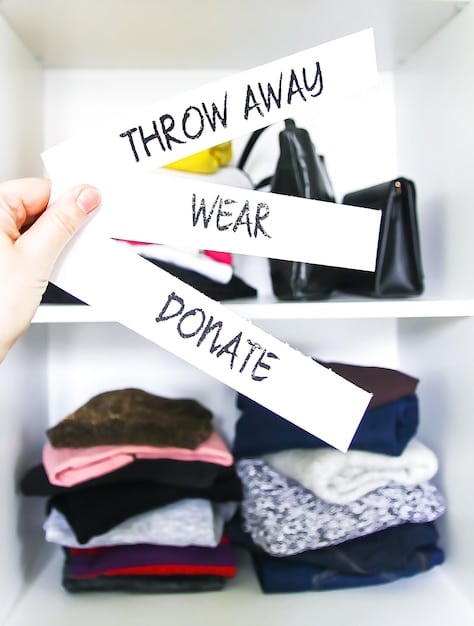
You will need: black pants, a button-down shirt, and a blazer. Add a belt for style.
The Weekend Chic Formula
This formula is all about relaxed elegance, combining comfort with a touch of sophistication. It’s perfect for brunches, shopping trips, or casual outings.
Ideas for ingredients: midi skirt, a cardigan sweater, and booties.
These are just a few examples but there are many options. The more outfit formulas you have, the better prepared you’ll be for any occasion. Remember the goal is to simplify your wardrobe and create combinations that make you feel confident and stylish.
Capsule Wardrobe: Curating a Minimalist Collection
A capsule wardrobe takes the mix-and-match concept to the next level by curating a carefully selected collection of clothing items that all work together harmoniously. The idea is to have a smaller, more intentional wardrobe that eliminates clutter and simplifies your daily dressing routine. A well-curated capsule wardrobe can be incredibly efficient and cost-effective, as it forces you to be more mindful of your purchases and encourages you to make the most of what you already own.
Defining Your Style
Before you start building your capsule wardrobe, take some time to define your personal style. What types of clothing do you gravitate towards? What colors and silhouettes make you feel most confident? Start with a color palette.
Choosing Versatile Pieces
Select versatile pieces that can be mixed and matched. Be practical but stylish. This will save time and keep things organized.
Creating a Seasonal Capsule
Create a seasonal capsule wardrobe to make the most of it. This will enable you to have the correct outfits for the weather. Rotate as needed.
Creating a capsule wardrobe requires a bit of planning and careful consideration, but the benefits are well worth the effort. By curating a minimalist collection of clothing items that all work together seamlessly, you’ll simplify your life and create a wardrobe that is both stylish and functional.
Tracking Your Wear: Identifying Your True Essentials
Understanding what you actually wear is key to refining your mix-and-match strategy. Keeping track of what you wear and how often can provide valuable insights into your personal style and help you identify the items that are truly essential to your wardrobe. This data can then be used to make more informed purchasing decisions, declutter your closet, and create a more streamlined and functional wardrobe overall.
Creating a Wear Log
Start by creating a simple system for tracking your outfits. This could be as simple as keeping a notebook, using a digital spreadsheet, or utilizing a dedicated wardrobe tracking app.
Identifying Your Go-To Items
After tracking your wear for a few weeks or months, you’ll start to see patterns emerge. Which items do you reach for most often? What combinations do you gravitate towards? These are your go-to items, the workhorses of your wardrobe.
Identifying Underutilized Items
On the other hand, you’ll also start to identify items that you rarely wear. These are the pieces that may be taking up valuable space in your closet without contributing much to your overall style.
By strategically tracking your wear, you’ll gain a deeper understanding of your personal style and identify the items that are truly essential to your mix-and-match wardrobe. This data-driven approach will empower you to make more informed decisions about your clothing and create a wardrobe that is both functional and stylish.
| Key Point | Brief Description |
|---|---|
| 👕 Essential Pieces | Focus on versatile basics like tees, jeans, and neutral bottoms. |
| 🎨 Color Palette | Build a cohesive palette with neutral bases and a pop of accent colors. |
| ✨ Accessories | Use accessories strategically to elevate and transform outfits. |
| 👗 Outfit Formulas | Create go-to combinations for different occasions. |
FAQ
▼
Start with a white tee, black tee, neutral skirt, dark wash jeans, neutral-colored button down, and a blazer. These items are versatile and easy to mix and match.
▼
Clothing must fit you well in order to look its best. If you buy items that are not your size, you will never be fully satisfied with how they look.
▼
Though it can be tempting to experiment, it’s best to buy the more timeless pieces. Trends often come and go, which means you will have to buy new clothing frequently.
▼
The more you know about color, the easier it will be to plan outfits with a variety of styles. Try comparing similar colors, as well as contrasting colors.
▼
This is different for everyone, but it’s something to consider. If you wear revealing tops, try pairing with a longer skirt. If you wear a short skirt, try a t-shirt with sleeves.
Conclusion
Mastering the art of mix and match is not merely about frugality; it’s about unleashing your personal style and maximizing the potential of your wardrobe. By understanding the principles of key pieces, color harmony, strategic accessorizing, and outfit formulas, you can create a multitude of stylish looks with ease and confidence.
